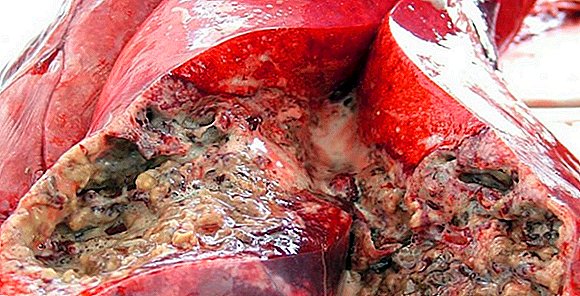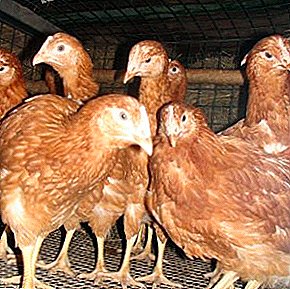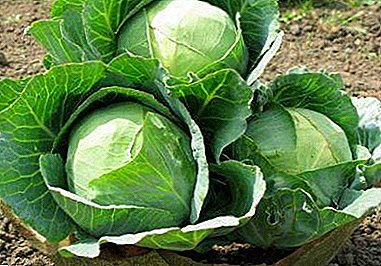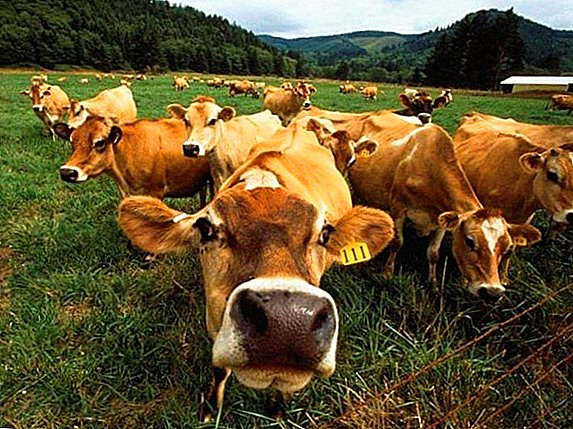 Cattle are susceptible to tuberculosis, and this disease causes farmer economic damage. It usually has a chronic form and is often asymptomatic. Most often affects the lungs, intestines, lymph nodes and other parenchymal organs and tissues. Consider with the pathogen, symptoms, diagnosis, treatment and prevention of tuberculosis in cattle.
Cattle are susceptible to tuberculosis, and this disease causes farmer economic damage. It usually has a chronic form and is often asymptomatic. Most often affects the lungs, intestines, lymph nodes and other parenchymal organs and tissues. Consider with the pathogen, symptoms, diagnosis, treatment and prevention of tuberculosis in cattle.
History reference

The very name of the tuberculosis disease was introduced by Laennec, a French doctor, as far back as 1819.. Somewhat later, in 1869, Vilmen investigated and proved that this disease is contagious and can cause epidemics.
In cows, this disease was discovered in 1828, however, signs and symptoms were described only in 1895 and were named after the research scientist, Ion's paratubercular enteritis.
On March 24, 1882, a microbiologist from Germany, R. Koch, isolated and described the causative agent of the disease, which is now known as the Koch wand.
After much research, he provided the world with tuberculin, which made it possible to detect the presence of tuberculosis in a patient. For these studies, he was awarded the Nobel Prize in 1905.
Did you know? In ancient Greece, a cow was often depicted with a calf sucking an udder, which symbolizes the divine power that feeds itself.
Pathogen, sources and routes of infection
Koch sticks belong to the group of related bacteria of the Mycobacterium tuberculosis complex. These pathogens of tuberculosis are aerobic, non-spore-forming, acid-resistant microbes. They look like a straight or slightly curved rod with dimensions of 1-10 microns at 0.2-0.6 microns.
There are three forms of Koch sticks that can be found in cows:
- bovine strain. The main carriers are cattle, but it is easily transmitted to other mammals, including humans;
- human strain. In addition to man, they suffer from cows, pigs, fur animals. Cats and dogs are rarely affected;
- bird strain. It is observed in wild and domestic birds, but can sometimes occur in animals (most often in pigs). People are diagnosed very rarely.

These types of sticks can be modified and become other types. They are very stable and long remain viable in the external environment.
For example, in soil, these microbes persist for up to 6 months, in an aquatic environment - up to 5 months, in a dry and lighted place - up to 2 months, and in a dark and dry room or in cattle corpses they can remain viable for up to a year.
With the most favorable external conditions for life (wet, dark, warm place), tuberculosis pathogens can remain viable for up to 7 years.
Microbes that are in the sputum of a sick mammal, completely die by boiling for 5 minutes. These microbes are sensitive to chlorine-containing drugs and to hydrogen peroxide.
Read also about such diseases of cows as: pasteurellosis, teliasiosis, cysticercosis, brucellosis, anaplasmosis, dictiocaulosis, babesiosis.
There are the following ways of infection with tuberculosis:
- airborne. The source of infection in this case is a sick individual that sneezed and coughed next. The probability of infection increases with crowded animals and in poorly ventilated barns;
- alimentary. Koch sticks penetrate the body through the digestive system. For example, when a sick and healthy animal is eaten or drunk from the same trough, the saliva of an infected cow enters the food or drink. A calf can become infected by a sick cow by consuming its milk;
- contact. Rarely encountered;
- intrauterine infection. It turns out as a result of lesions of the placenta or occurs during the birth of a tubercular cow. Also rare.

The source of infection in cattle is usually a sick animal - its sputum, saliva, milk, manure and urine. Since the causative agent of tuberculosis is very resistant, straw litter in stalls, pasture, common watering places, personnel clothing, livestock care tools and other items that have been in contact with sick individuals can be contagious.
Symptoms and course of the disease
With the penetration of infection in the body, after an incubation period (2-6 weeks), the following symptoms may occur in a sick cow:
- increased body temperature (up to 40 ° C);
- coughing up sputum;
- shortness of breath; hoarse breathing;
- weight loss;
- dry, loose skin.
Learn more about the ways of keeping cows, namely: about the tethered and loose.
Symptoms and infectiousness of tuberculosis depend on the location of the lesion. According to this indicator, the disease is divided into the following types:
- pulmonary tuberculosis. It occurs most often and the above symptoms relate primarily to him. Infection of healthy animals occurs mainly through airborne droplets and through saliva;

- intestinal form. When it is the source of infection for other animals are feces. Symptoms include diarrhea mixed with bloody clots and pus, exhaustion;
- udder tuberculosis. Infection occurs through milk. The udder of a sick cow in the back part swells up and becomes hard, it hurts when pressed. At the same time, the lymph node above the udder will also be enlarged, the nipples will deform, milk will be excreted with bloody particles;
- intrauterine device. In cows, this form is accompanied by abortions and sterility, and in bulls, by swelling and inflammation of the external genital organs. It can be sexually transmitted;
- generalized form. With it, the infection spreads through the blood and affects various organs and systems of the animal. It is characterized by an enlarged lymph nodes. If a brain damage occurred in an animal, then paralysis and other disorders of the central nervous system are added to the symptoms.
Important! Since tuberculosis in cattle usually develops in a chronic or asymptomatic form, such signs may not be immediately apparent. It may take more than one month, and sometimes symptoms appear after two years of infection. Many sick animals are no different from healthy ones.In young animals, the course of the disease may be subacute or acute. Then, to the above symptoms, an increase in lymph nodes and digestive disorders (constipation or diarrhea) can be added, since their tuberculosis can become generalized.
Diagnostics
Tuberculosis is most often found after the slaughter of an animal. It is important for private owners to monitor the symptoms of tuberculosis, and in large and medium-sized farms diagnostics should be carried out regularly.
The following methods and tests can be used for diagnosis:
- epizootological method. It turns out the epizootic situation of the farm, the degree of spread and the way of infection;
- clinical method. Attention is drawn to the symptoms of the disease. This method is considered important, despite the fact that tuberculosis may be asymptomatic;
- allergic method. The most common method of detecting this disease. Animals are injected with 0.2 ml of a vaccine with tuberculin in the middle of the neck or sub-tail fold (manufacturing bull) and wait 3 days. If the injection site has increased by 3 mm or more, painful sensations are observed, the temperature rises, then the result is considered positive. A tuberculin test is made twice a year and with a positive reaction, further research is carried out and measures are taken;
- autopsy method. An autopsy is performed on a dead animal. Usually done in the presence of a positive or controversial reaction in a tuberculin test. First, they look for visible changes characteristic of tuberculosis, and then laboratory tests are carried out.

If the results of an allergic method are ambiguous, a second test is carried out, the results of which are checked a day after the injection. It may not be subcutaneous, but the following:
- intraocular. For an eye test, 3-5 drops of the vaccine are buried under the lower eyelid. The appearance of conjunctivitis after 8-9 hours is considered a positive reaction;
- intravenous. An injection is made into a vein, after which the animal is measured for temperature every three hours. An increase in body temperature of 0.9 ° C indicates a positive test result.
Important! A sick animal or an individual with a positive reaction to tuberculin is mandatory sent for slaughter.
Pathological changes
At the opening of a patient with animal tuberculosis, the following is observed:
- appearance of nodules in organs and tissues ranging in size from a small kernel to a chicken egg. Often the bovine lymph nodes in the chest, lungs, less often - the liver, spleen, udder, intestines. Such nodules (tubercles) have a dense grayish structure with a mass of cheesy species in the middle, which is surrounded by a connective capsule;
- there are changes in the serous integuments of the chest cavity and peritoneum (pearl oyster);
- the mucous surface of the pharynx, intestine contains bumps and sores of different sizes, covered with a curd mass and having a solid bottom;
- in severe lesions, there is a violation of gas exchange in the lungs, anemia;
- in severe forms of the disease, severe exhaustion occurs;
- in chronic course, bronchopneumonia is observed.
Learn more about cow diseases.
Is it possible to cure
Unfortunately, effective drugs do not exist today, so it is not possible to cure infected cows.
In this regard, the identification and prophylactic measures of this disease in cattle should be treated with full responsibility.

Tuberculosis may not develop in an animal with a good immune system - in this case, the tuberculosis pathogen does not grow and may die in an independent manner. But if the disease begins to progress rapidly, then the animal must be eliminated.
Did you know? The ancient Egyptian goddess of the sky, Nuth, was depicted as a cow.
Is it possible to drink milk from infected cows?
Milk of cows infected with tuberculosis is dangerous for humans, especially for children, who, if consumed, can become infected with this disease in 90-100%.
It will be useful to learn about the properties of milk, namely: the density, fat content, as well as the beneficial and harmful properties of milk.
Mycobacterium tuberculosis is resistant to acidic environments. So, in sour milk they retain harmful properties for 20 days, in cheese products and butter - up to a year, and in ice cream - up to 6.5 years.
At a temperature of 60 ° C, mycobacteria are neutralized within half an hour.
 Milk from tuberculous cattle must be boiled for about 10 minutes and used only for feeding animals.
Milk from tuberculous cattle must be boiled for about 10 minutes and used only for feeding animals.
Learn how to feed dairy cows correctly.
Milk obtained from healthy cows, but from an unfavorable zone for this disease, is processed by pasteurization at a temperature of 90 ° C for 5 minutes, and at 85 ° C - at least half an hour.

Milk processing plants are allowed to provide only cream after the pasteurization process. From cows that have a positive reaction to tuberculin, milk should be boiled and used only inside the farms that contain them, but processing of such milk into melted butter is allowed.
Learn more about dairy cows.
Prevention and vaccine against cattle tuberculosis
For the development of immunity and as a specific prophylaxis apply the BCG vaccine, derived Calmette and Geren (1924).
For this purpose, the vaccine is administered by injection at intervals of two weeks according to the following norms:
- tubercular toxoid - 0.05-0.07 mg / kg;
- BCG vaccine - 0.05-0.1 mg / kg body weight of the animal.

Tuberculosis prevention is carried out in accordance with the following sanitary and veterinary rules:
- When purchasing animals, you must register them with a veterinarian, as well as get a tag with a registration number. It is also necessary to ensure the storage of such tags;
- inspect cattle for tuberculin test twice a year;
- All operations with cattle (purchase, sale, any movement, sale of dairy and meat products) should be carried out only with the permission and knowledge of the state bodies of the veterinary service;
- equip the necessary facilities of the veterinary and sanitary direction;
- adhere to all sanitary rules when preparing fodder to avoid infectious diseases;
- when acquiring animals, it is imperative to conduct quarantine within a month to take all tests, vaccinations and disinfectants;
- notify veterinary services of identified cases of livestock diseases with suspected tuberculosis (weight loss, pneumonia, swollen lymph nodes);
- conduct timely veterinary examinations, examinations and treatments;
- at the direction of the veterinary services, declare quarantine and liquidate sick animals with appropriate funding;
- timely detect and remove all hidden carriers of tuberculosis. For this, the offspring of sick animals are resettled, fattened and sold for meat before they become sources of the spread of the disease;
- keep cattle in well-ventilated, dry rooms, as with keeping in damp and cold rooms without litter, the likelihood of illness increases;
- monitor high-quality food, harvest them only from prosperous areas, provide the necessary vitamins and minerals;
- to identify the early stage of the disease to take samples for analysis of carcasses after slaughter;
- to observe hygienic standards in the household, timely disinfect the room, replace the litter, expose all dishes and equipment to thorough treatment and keep it clean.
Did you know? On average, one cow receives milk in the amount of 200 thousand cups. A herd of cows, numbering 60 heads, gives a ton of milk in one day.Tuberculosis in cows is not treated and is an infectious disease. It can occur without severe symptoms, so it is important to carry out timely diagnostic and preventive measures.
This microbe is very resistant to the external environment, and sick animals are destroyed, as they can serve as a source of infection for the rest of the herd and for humans.
Video: vaccination of cows for tuberculosis













